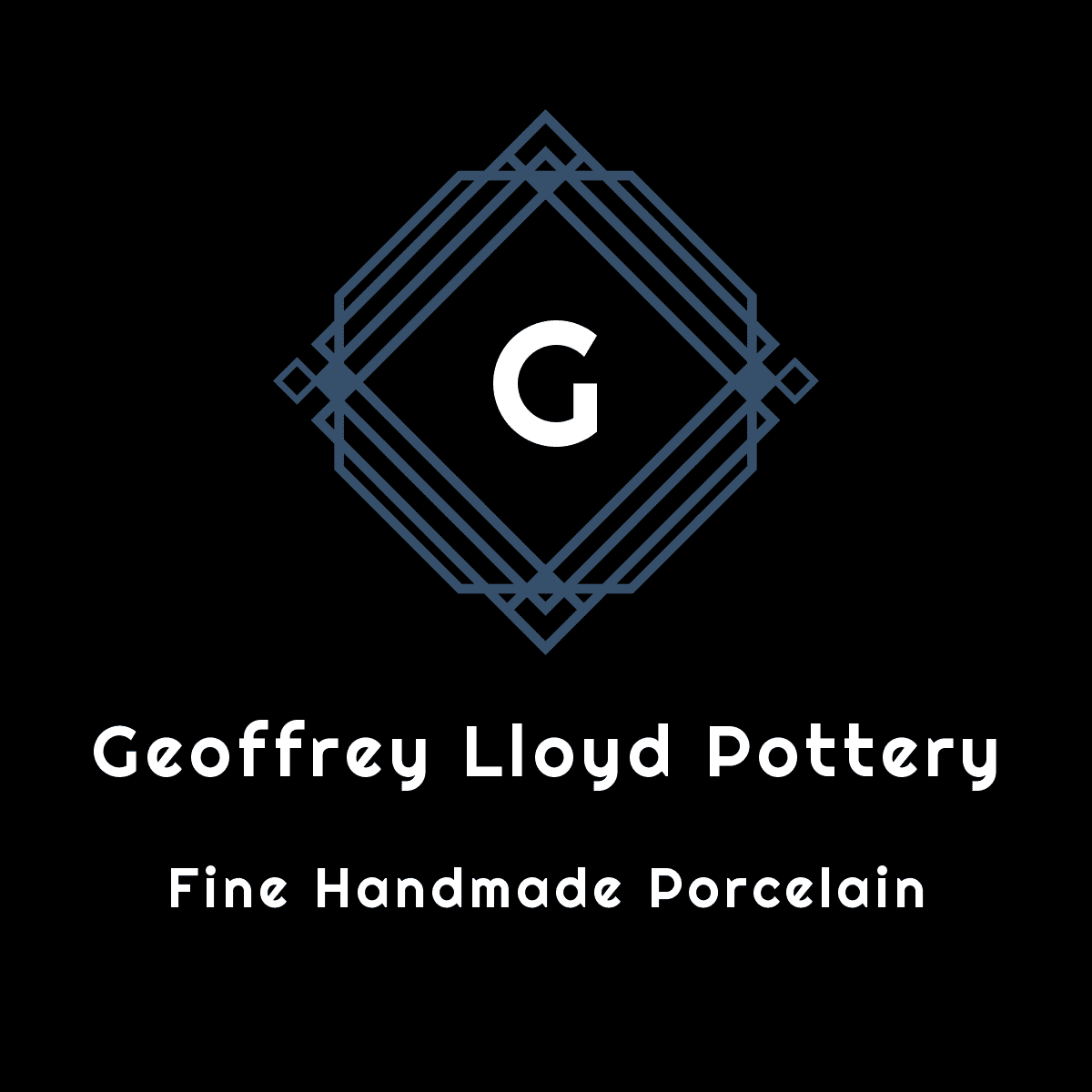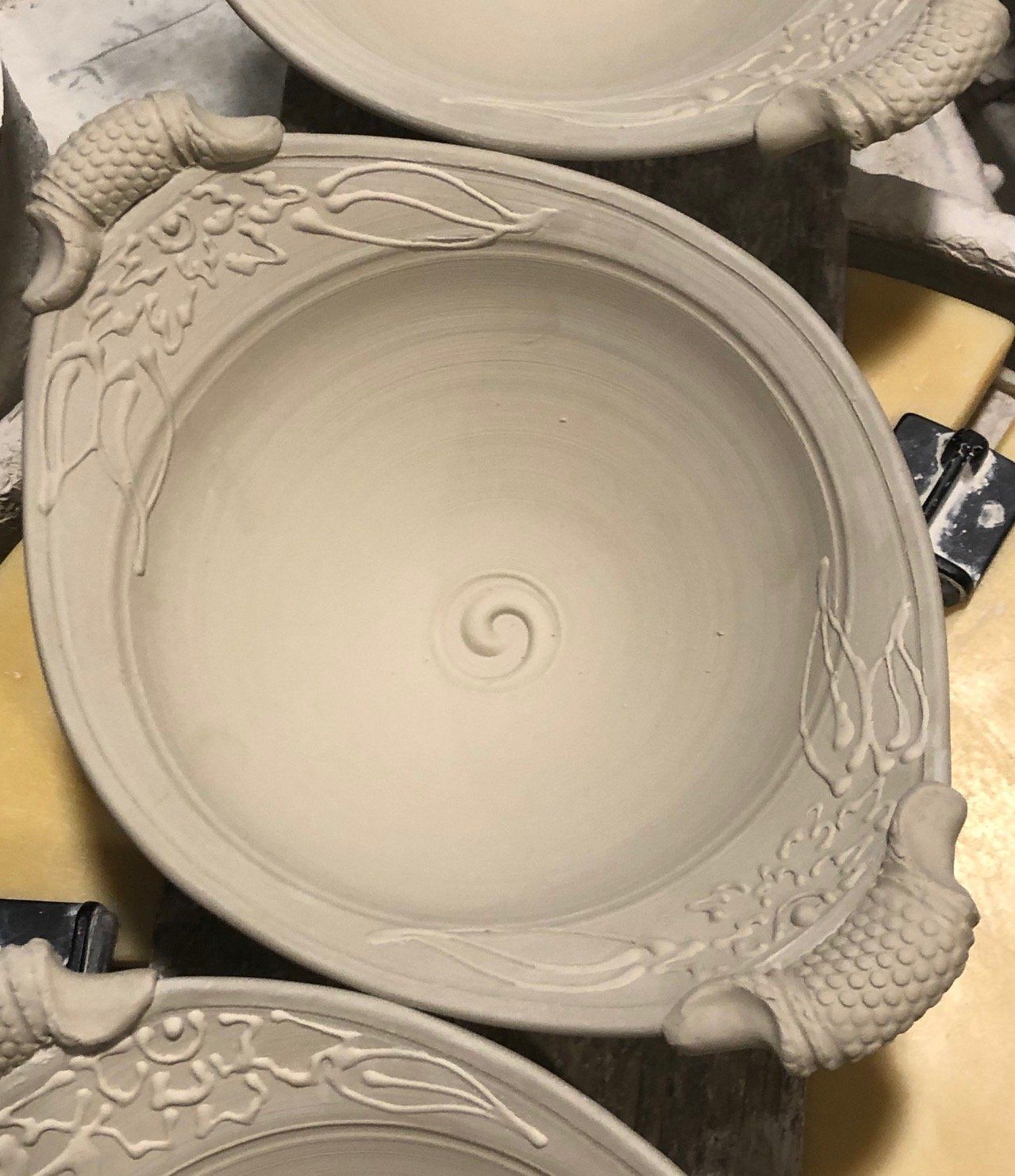The Production Process
All of my work is made of high quality English Grollege Porcelain, finished with slip trailed decorations and multi-layered glazes, and fired in a large gas kiln to extremely high temperature to insure maximum durability
Making the Basic Form
Every piece begins as a ball of raw clay which is weighed to ensure consistent sizing. Weight is predetermined by the finished size and form being made. Next it is moistened and affixed to the throwing wheel to begin formation. Using water to continually lubricate the surface, the clay is then pressed into the center of the wheel such that it begins to rotate evenly. Then begins the process of opening the lump of clay and applying pressure in various ways to form the bottom, foot, walls, and rim of the pot. Once the form is complete the clay is separated from the wheel by cutting it off at the base with thin wire or fishing line and gently placing it on a ware board for drying.
Finishing Steps
When the piece is about half way dry and able to be handled it is inverted and placed back on the wheel to trim the bottom section in order to remove excess clay and form the foot of the pot. At that point I apply any handles, spouts, or appendages to the piece and apply the raised line decorations, called slip trailing, by squeezing watered down clay from an applicator bulb and syringe. The final finishing step is hand signing the bottom of every piece with my initials. The ware is usually allowed to dry completely for several days at that point. Next, before applying glaze, each piece has to be smoothed and have a layer of wax applied on the bottom to keep the glaze from being absorbed in that area during application; otherwise the glaze would fuse the ware to the shelf as it becomes molten in the firing process.
Glazing and Firing
Unlike the majority of potters, I like to apply glazes to the piece while it is just dried raw clay, eliminating the process referred to as 'bisque firing". I use a combination of pouring, dipping, painting and spraying on the multiple layers of different glazes used to achieve the desired results. My "special effect" glazes include a variety of wood ash, micro-crystalline, and copper red glazes. Once glazing is complete the pots are loaded into the kiln to begin the firing process. This "single firing" process typically takes between 16-18 hours as the gas is slowly ramped up to increase the temperature until it ultimately reaches nearly 2450 degrees Fahrenheit before turning it off. Throughout the firing the flue damper is continually adjusted. During the later half of the firing I will maintain a "reduction atmosphere" in the kiln. This is achieved by closing down the damper just enough to slightly starve the kiln of oxygen. This delicate process is critical to achieving the desired colors and is responsible for much of the variations prevalent from one firing to the next. After roughly 20-24 hours of cooling, the kiln is unloaded and each pot gets a light sanding on the bottom. They are then ready to use!



